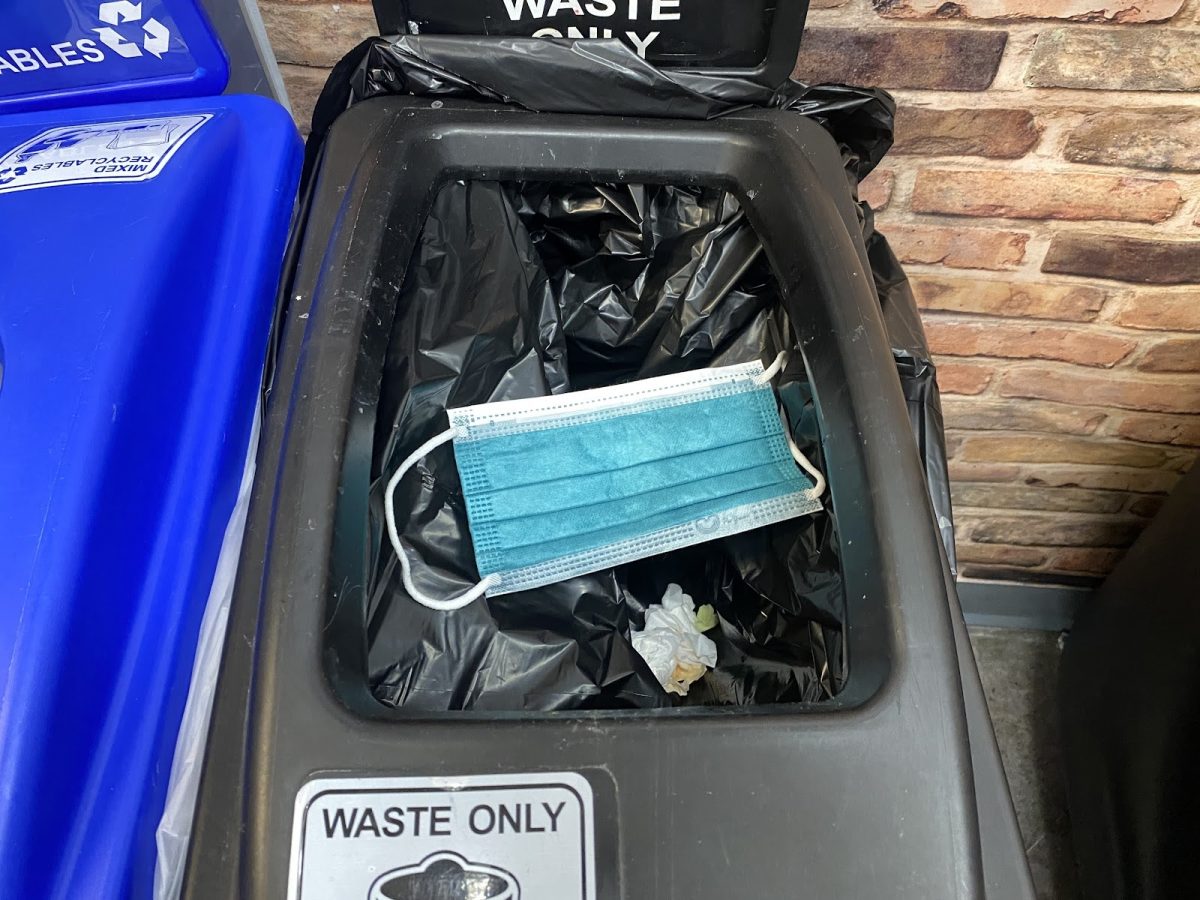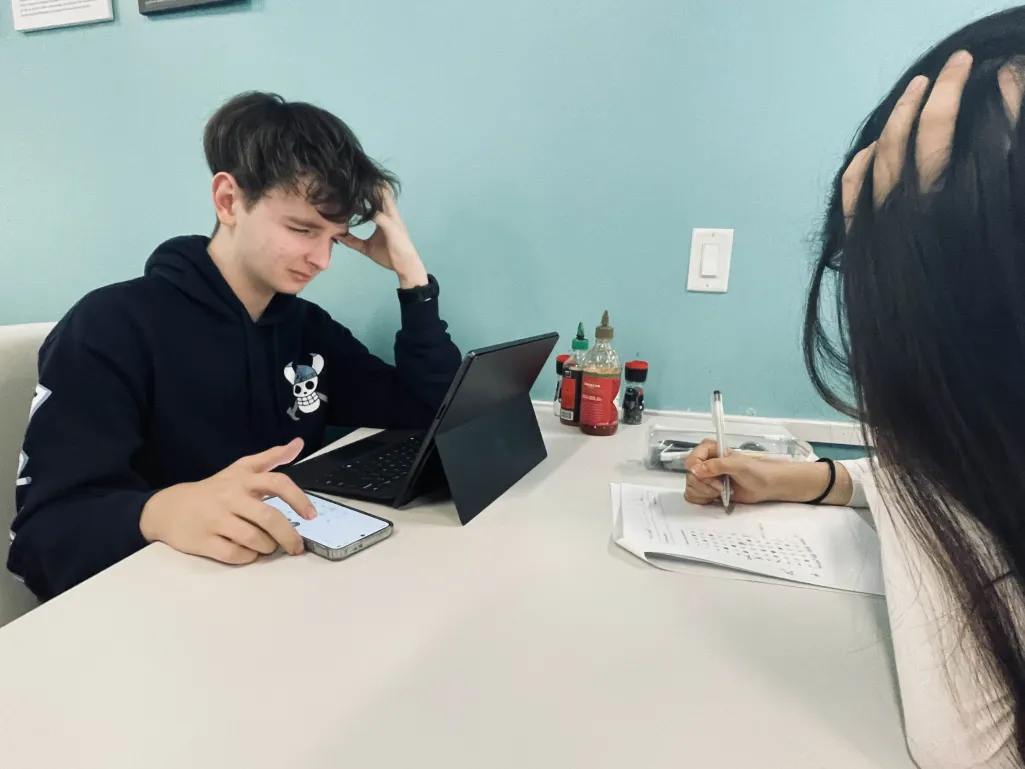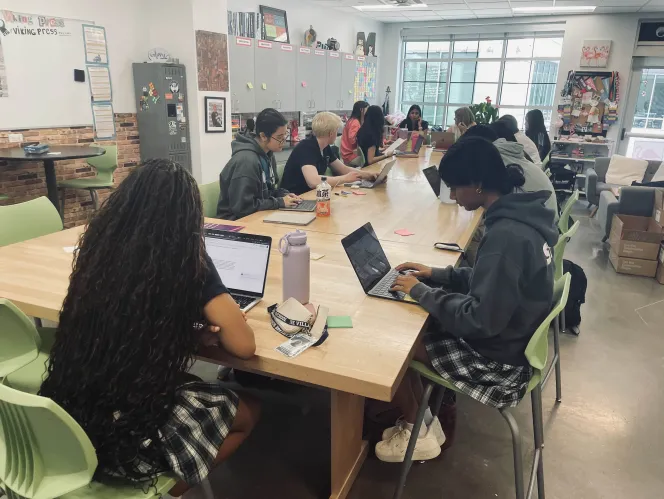COVID-19, a once highly feared virus, is now simply considered a rival to the common cold – but recently, it has struck back. On Tuesday, September 12, 2023, the most recently updated COVID-19 vaccine was released, available to anyone six months or older. This new vaccine could be a big step in lessening the impact of the virus on our classrooms – that is of course, if it is used. With students attending school sick, and a generally reduced level of caution, how are we to stay safe?
While the virus has somewhat abated in terms of casualties and severity, that doesn’t mean it is gone for good. With both death and hospitalization numbers for COVID-19 going up (as mentioned by the Centre for Disease Control, CDC), it is imperative that we understand the risks we take when handling the virus as a common cold. We, as students, must remember that it still impacts our lives. We must respect the impact of the virus, or less caution will be exercised leading to more infected people. Although the vast majority of people can recover from the newest strain with ease, some with pre-existing health conditions are at a much higher risk of serious complications when catching the virus, possibly having symptoms that take much longer to settle, are incredibly severe, or even death.
Following the release of the new vaccine, concerns are not quelled, and here’s why. As stated by the Kaiser Family Foundation (KFF) in their COVID-19 “Vaccine Monitor: March 2023”, in six to seven months, less than a quarter of the surveyed adults had gotten the booster released in September 2022. This leads me to wonder whether or not this new vaccine will be any different. According to the CDC, COVID-19 was the third leading cause of death in the U.S. only a year ago. If COVID-19 was a heightened concern back then, and we still had low numbers of people taking the booster, then what would happen with the newest vaccine?
“If you’re sick, and you’re symptomatic, and you could potentially be contagious,” said Jeff Bond, head of the Village School safety department. “You need to stay home until you are healthy and well, and symptom-free for 24 hours before you come back to school.”However, students continue to attend school while under the weather. This behavior puts others at risk, leading to further exposure. Even as COVID has evolved to something more akin to a harsh cold, it doesn’t change the fact that it is a virus to be feared. According to the Village School’s Health and Hygiene Guidelines of 2023-2024, we are still to refrain from coming to school with any signs of illness, much less symptoms aligned with COVID-19. The health of those who are immuno-compromised must be taken into account. It is not only a matter of considering ourselves, but also the people around us.
To dive further into this, let’s start with talking about the immuno-compromised community. According to a Yale Medicine article, “About 3% of the population in the United States is considered moderately-to-severely immunocompromised”. Although some people may view this as a relatively small number, I find it to be quite worrisome when we factor in that many Village school students have family and possibly grandparents constantly around them. “Try to be very thoughtful of other people… the best thing is when you’re sick, don’t come to school… ” said Leslie Faulk, High School nurse of the Village School. “That lowers the risk of illness for others, whether it be staff or students.” Considering the position of others is essential in reminding ourselves of other peoples’ situations. Even if catching COVID isn’t terrible for you, it may just be fatal for others.
Given the fact that COVID-19 is here to stay (fatal or not), it is imperative that we remember to remain cautious.This means not only considering ourselves, but others too. Of course, this doesn’t mean we should revert to wearing a mask at all times again, but it is more of a reminder to stay conscious of COVID. By getting the recommended vaccines, new and old, you too can help others and yourself stay safe. Moreover, we should continue to practice maintaining hygiene by washing our hands and staying clean to prevent more risk than necessary.
References
Centers for Disease Control and Prevention. (2022, April 22). Covid-19 was third leading cause of death in the U.S. Centers for Disease Control and Prevention. https://www.cdc.gov/media/releases/2022/s0422-third-leading-cause.html
Centers for Disease Control and Prevention. (2023a, May 11). CDC Covid Data tracker. Centers for Disease Control and Prevention. https://covid.cdc.gov/covid-data-tracker/#vaccinations_vacc-people-onedose-pop-total
Centers for Disease Control and Prevention. (2023b, September 12). Updated covid-19 vaccine recommendations now available. Centers for Disease Control and Prevention. https://www.cdc.gov/respiratory-viruses/whats-new/covid-vaccine-recommendations-9-12-2023.html#:~:text=On%20September%2012%2C%202023%2C%20CDC,%2C%20hospitalization%2C%20and%20even%20death
Centers for Disease Control and Prevention. (2023c, September 21). CDC Covid Data tracker. Centers for Disease Control and Prevention. https://covid.cdc.gov/covid-data-tracker/#datatracker-home
Immunize. (2023, September 12). Official releases. Official Vaccine Releases: View All by Date 2023. https://www.immunize.org/newreleases/
Sparks Follow @gracesparks on Twitter, G., Presiado, M., Valdes, I., Kirzinger, A., & Brody, M. (2023, April 3). KFF COVID-19 Vaccine Monitor: March 2023. KFF. https://www.kff.org/coronavirus-covid-19/poll-finding/kff-covid-19-vaccine-monitor-march-2023/








